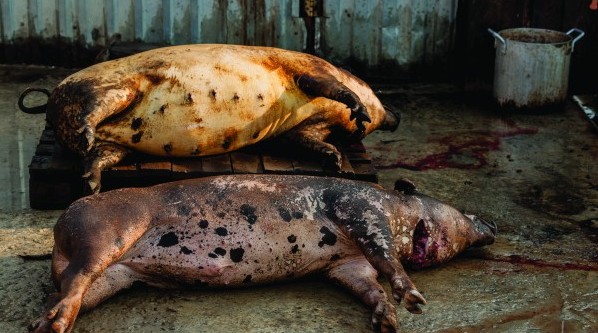Alistair Driver explains how the devastating spread of African swine fever is affecting the market today and could shape global protein production and consumption in the future
It is being described as the biggest animal disease outbreak the world has ever seen. Its impacts are already profound in Asia and beyond, with increased export demand certain to support pork prices for the foreseeable future. There will be longer-term implications of Asia’s African swine fever (ASF) outbreak, too, concerning the production and consumption of pork, some of which are already becoming apparent.
The global pork industry will need to be wary that short-term gain does not turn into long-term pain.
The scale of what is happening in Asia is staggering – ASF is an animal welfare, social and economic disaster of astonishing proportions.
The virus has spread across the whole of China since it was first discovered in August 2018.
Official figures from China show the national pig herd had declined by 32% year-on-year by July, with an estimated 100 million pigs lost already. While some of the losses will be directly or indirectly linked to the disease itself, the reduction is also being heavily driven by vast numbers of producers choosing to slaughter their herds and get out of pigs before the virus gets to them.
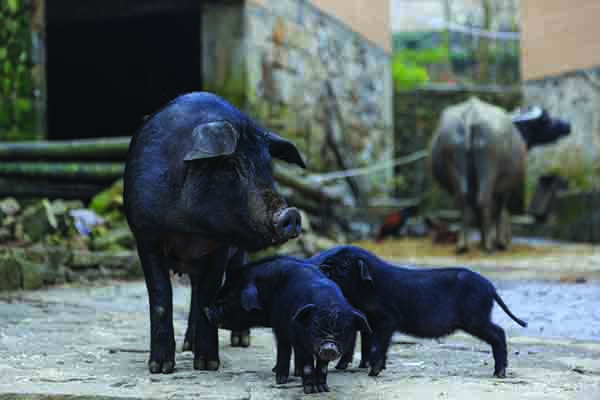
Rabobank is forecasting that, by the end of the year, China’s pig herd will have halved. Given that it numbered 700 million and accounted for half the world’s pigs before ASF struck in August 2018, the damage the virus is causing is plain for all to see.
And that is just China. ASF is continuing to spread across Asia at a worrying rate, confirmed in September for the first time in South Korea, where six cases were confirmed within two weeks, and the Philippines, where 12 cases were recorded in one area in a short time.
In Vietnam, infected soon after China, the virus has reached all 63 provinces and around 5 million pigs have been killed. Rabobank forecasts a 15-20% reduction in pork production in Vietnam this year.
ASF has also been recorded in North Korea, Vietnam, Cambodia, Laos, Mongolia, Hong Kong and Myanmar. So far.
These are typically, like China, countries with large pig populations and consumers traditionally hugely reliant on pork to satisfy their protein needs – in Vietnam, pork accounts for three-quarters of all meat consumed.
Ineffective Response
There is little real sign of the virus being under control in China, which continued to report new cases in September. The response was hampered by a number of factors from the start.
An industry comprising millions of, often remote, ‘backyard’ farmers, with little concept of biosecurity was always going to be easy prey for a virus that can travel and survive in tiny quantities for a long time on animals, people, clothes, vehicles and equipment. It also became clear at an early stage that the virus had become embedded in the pig feed chain and was being spread via swill feeding. It is also in the human pork supply chain, helping its spread around the continent.
The authorities, clearly unprepared, have never looked in control. In July, the Chinese Government acknowledged that there were still weak points in the system and announced that it was strengthening controls.
These included better biosecurity on farms, raising awareness of the waste feeding ban, improving the management of transport of pigs and pork products and improved supervision at abattoirs.
But they still have a mountain to climb, as this insight from an ASF-affected farmer quoted in the South China Morning Post highlights.
Chen Yun, who kept around 10,000 pigs in the southern Jiangxi province, said he had lost more than five million yuan (about £570,000) after his farm became infected in June.
“The biggest problem is there are no [effective] epidemic prevention measures. Local insurance companies and governments have not compensated us for the losses caused by the spread of the fever,” he said.
“We buried the dead pigs who died in just one or two days and then had to sell the 10,000 live pigs at a dirt cheap price, including breeding pigs, sows and piglets. My heart was broken.”
Under-reporting, linked to a lack of compensation, is thought to be common, while the sight of mass live burials of Chinese pigs that have emerged in video footage only reinforces the sense of horror and chaos.
It is a picture also seen elsewhere. Footage of pigs dumped in a river close to where the virus struck in the Philippines, for example, paints a worrying picture.
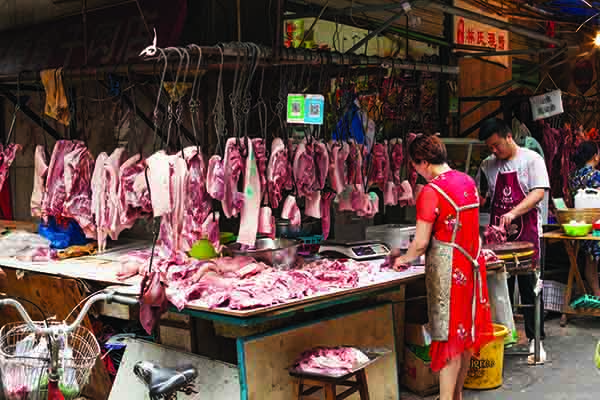
Protein Deficit
The upshot is that there a huge deficit in protein across Asia. Rabobank estimates that Chinese pork production will fall by 24% this year and by a further 10-15% in 2020, the productivity fall not matching the herd decline due to the large number of herd liquidations in the first half of the year.
Chinese Vice Premier Hu Chunhua has warned that the supply situation will be ‘extremely severe’ through to the first half of 2020 and that China is likely to have a pork shortage of 10 million tonnes this year, according to Bloomberg. That is more than the 8m tonnes annually traded globally. Unsurprisingly, pig prices in China have soared, as have wholesale pork prices currently standing at almost double the levels at the start of the year.
Pork prices surged in particular in August, rising 47% following a 27% increase in July, reflecting the deteriorating supply situation. Amid reports of pork rationing, analysts predict prices could go even higher, further fuelling inflation, a big concern for the Government.
China is trying to fill the gap, partly by releasing huge volumes of pork from state cold stores, much of which is there as a result of the mass liquidations.
On one day alone in mid- September, the Government auctioned 10,000 tonnes of pork from its strategic reserves to ensure sufficient supplies during a national holiday.
State news agency Xinhua reported that it also released 2,400t of beef and 1,900t of mutton from state reserves earlier in the month.
But those stocks are finite and dwindling fast.
China is also importing massive volumes of meat. Pork imports increased by 12% in the first half of 2019, with Spain the biggest beneficiary, shipping nearly 160,000t in the six-month period.
It was followed by Germany, Canada, Brazil and – despite tariffs imposed as part of the US-China trade war – the US.
The UK has benefited, too. In the first seven months of the year, pork exports to China increased by 82%, totalling 38,619t, with offal exports to China around 33% higher at 28,102t.
It is not just pork. Beef imports were up by 50%, mainly from South America, while poultry imports are also increasing, with Brazil a major beneficiary and the EU increasing volumes from a low base.
Given the enormous hole in pork production, declining domestic stocks and little of sign the virus is being brought under control in China and beyond, there is no doubt the trend will continue for some time.
Rabobank forecasts that Chinese pork import volumes, which amounted to just over 2m tonnes in 2018 will top 3m t in 2019 and 4m t in 2020.
The likes of Vietnam and other nations that suffer big productivity losses will be looking to the global markets, too.
The EU is certain to be major beneficiary, although Rabobank notes that its response could be limited by relatively high prices and a ‘cautious production response’, while politics could constrain the US and Canadian responses.
China suspended meat imports from Canada in June after an investigation revealed that batches of Canadian pork were accompanied by counterfeit health certification documents.
But in a highly significant development, China announced in September that it was exempting US pork imports from trade tariffs, a move warmly welcomed by the US National Pork Producers Council. US pork exporters are reportedly expecting rapid results.
“They’re going to be looking for more reliable sources and there is no more reliable source than the US. This will have a cascading effect around the world,” a NPPC spokesman told The Guardian.
China also recently added 25 Brazilian meat plants to its list of approved exporters, bringing the total to 89, according to Brazil’s Ministry of Agriculture. Against all of this, reduced
demand from Asia for pig feed ingredients has hit global soya prices, something likely to benefit producers in terms of feed prices.
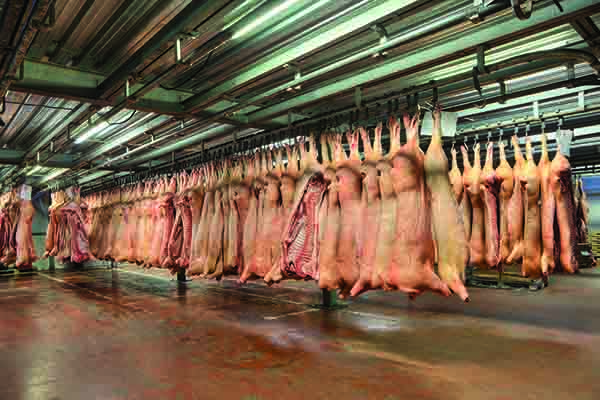
The China Effect
The downside for UK producers, of course, is that while the ‘China effect’ has seen pork prices soar across the world, they have hardly moved here.
Export prices rose sharply in the second quarter in the world’s four main pork exporters – the EU, US, Canada and Brazil, averaging $2.75/kg in June, up 9% on a year earlier.
The high prices have been maintained, continuing to rise in Europe, where the mid- September EU reference of 162/p/kg, compared with around 120p/kg during the first quarter. In Germany, the reference price recently topped 174p, more than 50p up on a few months earlier.
But in the UK, the SPP, hovering around 152-153p/kg since mid-July, remains only a few pence ahead of where it was in the first quarter.
Lots of explanations have been put forward – from Brexit stockpiling and the failure of processors to extract sufficient value from retailers; through to ample UK supplies, static domestic demand and the levelling effect of the SPP.
Another factor often cited has been the lack of factories approved to export to China – a situation now rapidly changing. According to a Scotlean market report, with the recent approvals of Tulip’s Westerley and Brechin plants, there will be nine plants among the big three UK pork processors with approval to supply ‘5th quarter’ cuts, trotters, primals and pigmeat into China – ‘which has to be good news for an otherwise flagging UK demand’.
This is fuelling fresh optimism that – with the enormous caveat of no deal Brexit uncertainty – the market should finally start to look up.
NPA chief executive Zoe Davies said: “Chinese exports will increase still further as more UK plants become fully approved, including for the lucrative trotter market, hopefully by the end of September.
“Marketing groups have consistently said that the real increase will be seen at the end of Q3/beginning of Q4, so the picture will be much more positive towards the end of the year, at a time when prices would traditionally drop.”
The Future Picture
Looking further ahead, however, there are reasons to be cautious. China is not taking the situation lying down.
It will strive, ultimately to achieve a position of near self-sufficiency in pork production, according to Yu Kangzhen, a vice-minister for agriculture, the SCMP reports.
He said it was unrealistic for China to pin its hope on imports to meet demand for pork, pointing out that last year’s total global trade in pork of 8mt t was less than 15% of China’s total production of 54m t.
“So from the statistics alone, we can see that we must adhere to the principle of self-sufficiency if we are to meet our demand for meat, and this also explains why we have put forward a 95% self-sufficiency target,” he said. China has reportedly already spent 3.23 billion yuan (£370m) in subsidies so far this year to tackle the pork shortage crisis, including support for farm improvement works.
But in response to frustration within the Government, which is desperate to restore its domestic supplies, that farmers – not entirely surprisingly – are not restocking after ASF outbreaks, details of further huge subsidy programmes have emerged.
These include, according to Reuters, subsidies of up to 5 million yuan (£570,000) to support the construction of large-scale pig farms.
It is reported that funds will be used to subsidise new or rebuilt pig farms and relocation projects before the end of 2020, focusing on facilities that prioritise disease prevention and use automatic feed systems.
The authorities are also asking local governments to free up money for artificial insemination technology, as well expediting subsidies to farms where pigs have been culled because of ASF.
Beijing also plans to increase subsidies, loan support and insurance coverage for pig producers nationwide.
This appears to be the first step in the transformation of China’s pig sector – as predicted by Gira’s Richard Brown at May’s Pigs Tomorrow Conference – away from the millions of backyard keepers scattered across its rural areas towards heavily commercialised, large – sometimes multi-storey – biosecure industrial pig units, a transition already taking place in Russia in response to sustained presence of the virus.
Analysts are in universal agreement that, with the virus still rampant, the recovery process will take a long-time – Rabobank suggests it will take ‘at least five years’ for production to recover in the worst hit countries.
But there is no doubt about where China wants to end up – and this will look very different to how it did before ASF arrived.
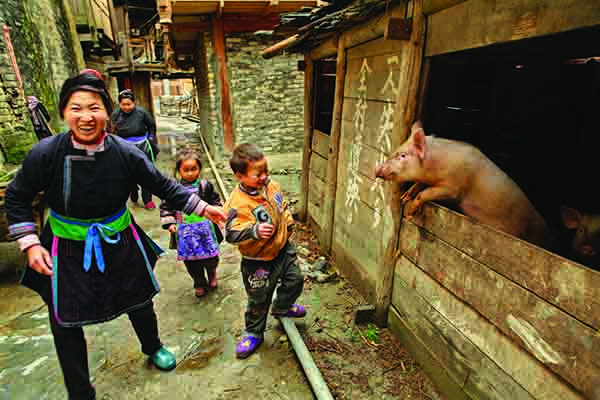
Shifting Consumption
Meanwhile, with not enough pork to go round, consumption is changing, too.
Production of all other proteins is up in China, with poultry at the front of the queue –forecast to grow by 10% in 2019 and more beyond, with prices up to match, according to Rabobank. Eggs, seafood, beef and lamb are seeing growth, too.
Consumers are being forced to switch to other proteins by a combination of availability and price, with some reportedly put off pork by a misplaced fear of contracting ASF.
Analysts believe these production and consumption patterns will be sustained.
“ASF in China is turning out to be the largest global event for animal protein,” Adam Speck, a senior commodity analyst with IHS Markit’s Agribusiness Intelligence told The Guardian.
“The impacts are going to completely change the global trade in animal protein over the next 10 years, and those changes will be permanent. China is home to half the world’s hogs and consumes half the world’s pork.
“When you have devastation like the devastation that ASF has released, you reduce the world’s supply. We don’t have enough globally to replace what China has lost.”
View from China
Former AHDB Pork strategy director Mick Sloyan chaired a discussion on the impact of ASF at the World Pork Congress, in Chengdu, China, during the last week of September.
He said the messages coming out China were clear.
“A near doubling of pig prices in China in the last year will continue to drive imports and have a positive impact on prices in Europe. But Chinese pork production will recover. The unresolved question is when,” he said.

Delegates at the event, organised by the International Meat Secretariat and the China Meat Association, heard from Chinese Government officials that in the last year, the live pig price had increased by 90% and the pork wholesale price was up by 80% as a result of the sharp decline in pork supplies.
“The demand for imported pork and offal has increased dramatically, especially from the EU, despite a release of government-held stocks and a fall in consumption,” Mr Sloyan said.
“Government officials outlined a wide range of policy measures and financial incentives that have been put in place aimed at controlling and eliminating ASF and stimulating a recovery in production. They also stated that a previous policy aimed at restricting production in parts of China would be relaxed.
“Everybody agreed that Chinese production would recover. However, there were different opinions about when that would happen.
“While some organisations thought production could recover within a year, most felt that it could take three years or longer. So, it looks like Chinese import demand is likely to remain strong into 2020. This should benefit UK and other EU exporters.”
But he warned that the USA could be a major competitor with removed or reduced tariffs, noting that, even with 72% tariffs, it still saw growth in its pork trade to China.
He added that there was no evidence that the spread is under control as there continue to be sporadic outbreaks.
“The reversal of policy restricting production may also make it more difficult to remove small scale producers which could be a risk factor for the future,” he said, adding that the spread of ASF into neighbouring countries made it less likely it would be under control any time soon.




